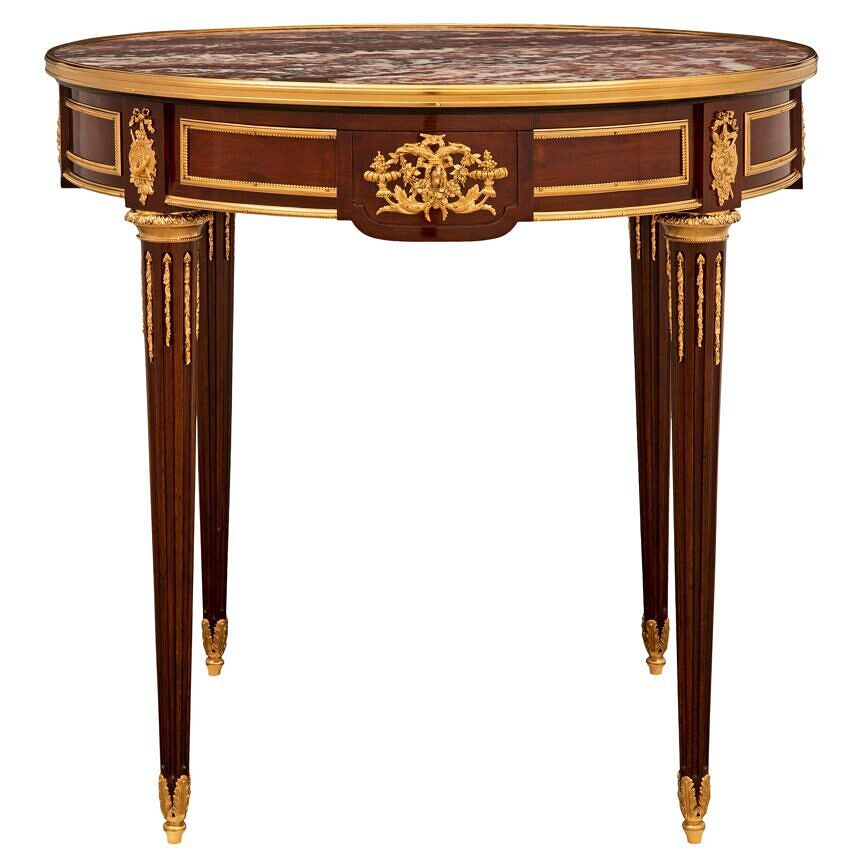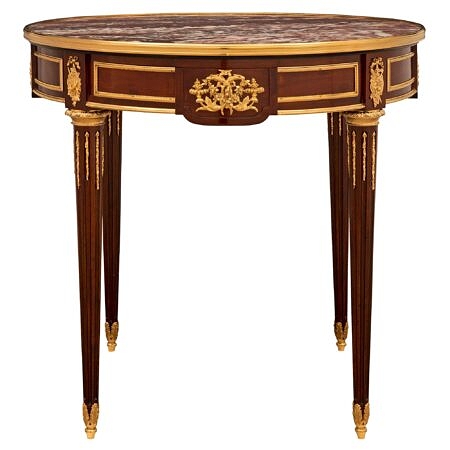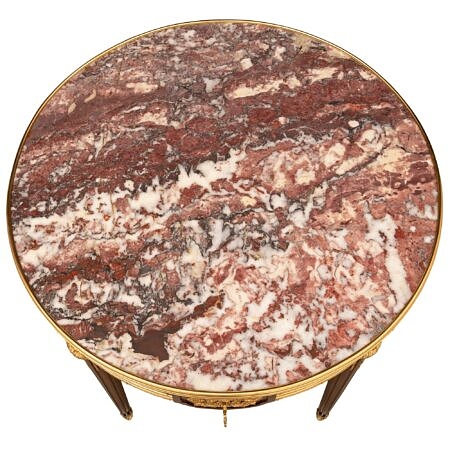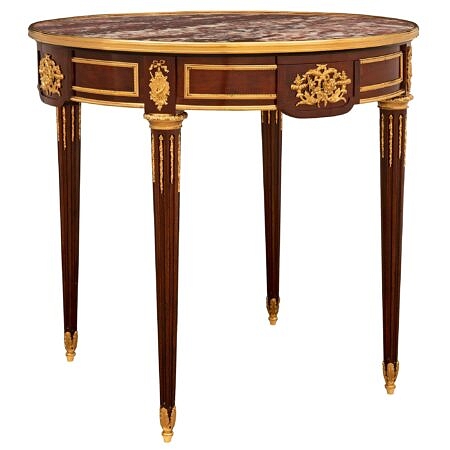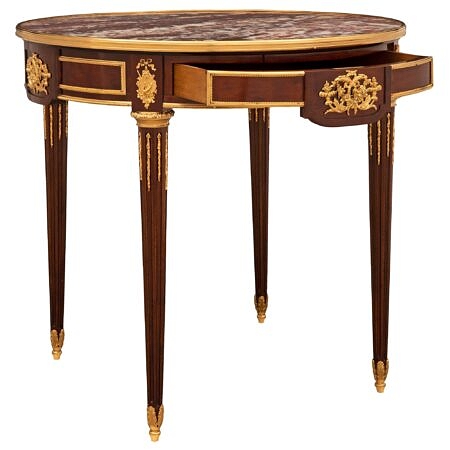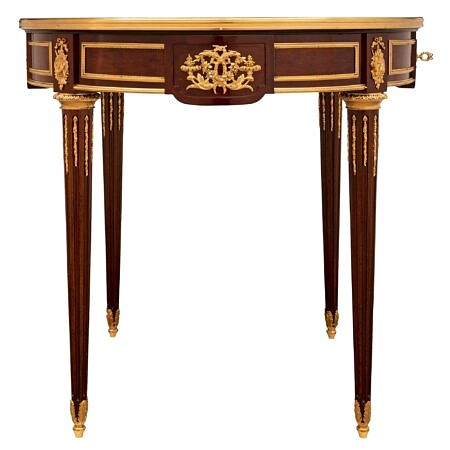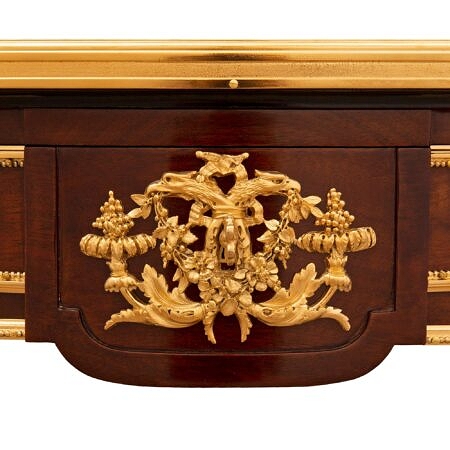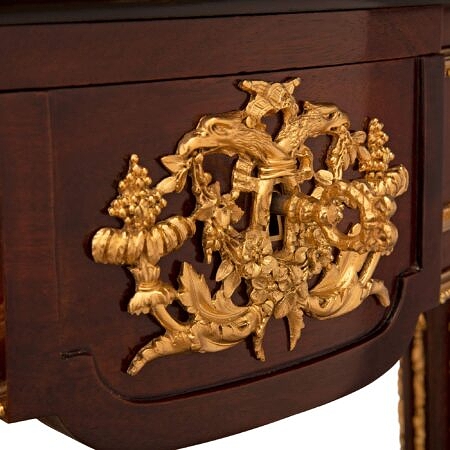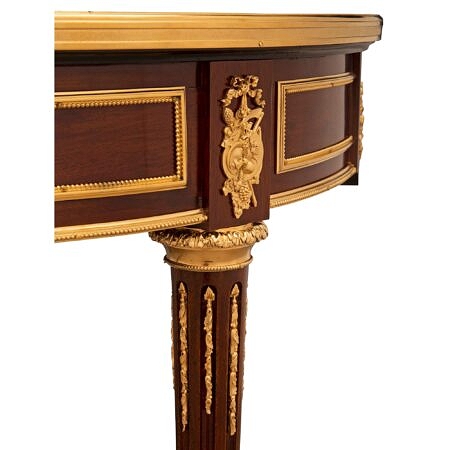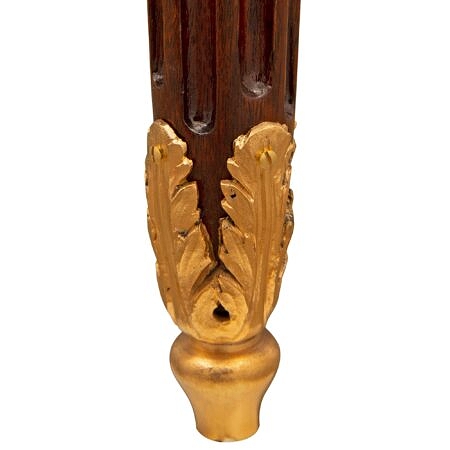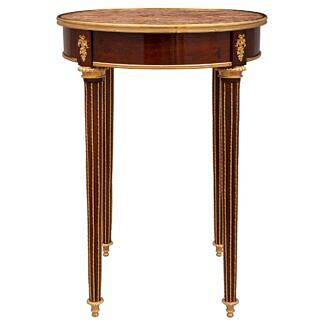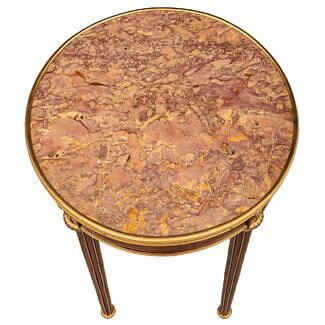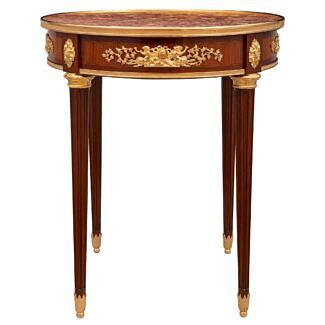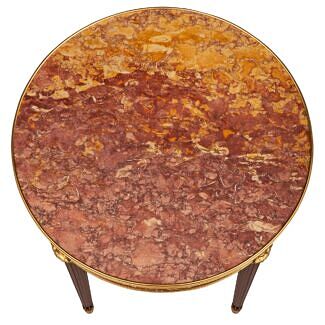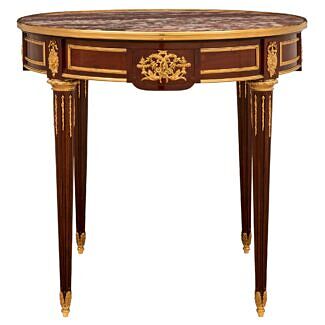A French 19th century Louis XVI st. Belle Époque period Mahogany, ormolu and Escalette marble side/center table attributed to Maison Krieger
A stunning and very high quality French 19th century Louis XVI st. Belle Époque period Mahogany, ormolu, and Escalette marble side/center table attributed to Maison Krieger. The table is raised by elegant circular tapered fluted legs with fine fitted foliate... — Read More
A stunning and very high quality French 19th century Louis XVI st. Belle Époque period Mahogany, ormolu, and Escalette marble side/center table attributed to Maison Krieger. The table is raised by elegant circular tapered fluted legs with fine fitted foliate ormolu sabots, beautiful richly chased fitted chandelles, and lovely mottled ormolu top caps. Above each leg are superb intricately detailed ormolu mounts of charming musical instruments including a tambourine with a hammered design, a horn, a triangle, and castanets amidst foliate designs. The apron displays one draw at the front centered by a striking pierced ormolu mount with remarkable scrolled foliate movements, wonderful blooming flowers, and finely detailed eagle heads holding berried laurel garlands in their beaks set on a mahogany background and flanked by exceptional recessed panels framed within a beaded mottled ormolu band. The side and back are decorated in the same manner while above is the original fitted Escalette marble top framed within an elegant wrap around mottled ormolu gallery.
Maison Krieger was founded by Antoine and Nicolas Krieger in Paris in 1826. Producing and taking part in major exhibitions of the 19th century, including the Exposition Universelle and the 1849 Exposition des Produits de l'Industrie in Paris. Receiving a medal for their exhibition at the Universal Exhibitions of 1851 in London, and again in 1855, Paris. Maison Krieger created many pieces in Louis XV & Louis XVI styles, 18th century and Empire designs. Maison Krieger is recorded to have been an active client of François Linke. — Read Less
- Item # 12219
-
H: 31 in L: 31.75 in D: 31.75 in
H: 79 cm L: 81 cm D: 81 cm
- France
- 19th Century
- Mahogany, Marble/Stone, Ormolu
-
Belle Époque Period Read More,
Louis XVI st. Read More
(Belle Époque Period) -
Gaining its name from the optimistic and peaceful period of time between 1871 and World War I, Belle Epoque means “beautiful period”, and occurred during the era of the Third French Republic. This period of economic, colonial, and scientific prosperity brought with it a flourishing artistic climate with numerous literal, musical, theatrical, and visual masterpieces being created.
The Eiffel Tower, which was constructed between 1887 and 1889, served as the entrance to the World’s Fair held in Paris. That same year, the Moulin Rouge cabaret in Paris was founded and showcased the now more mainstream styles of performance including can-can dancing. Belle Epoque dancers and singers were Paris celebrities and became immortalized by the poster arts of Toulouse-Lautrec.
Leading up to this period in 1865, the American Civil War was coming to a close, with France proposing to construct the Statue of Liberty as a joint effort with the United States. France would be responsible for the statue, with America constructing the pedestal. Created to celebrate the nation’s success in building a viable democracy, the statue would stand as a symbol of friendship between the French and American people.
(Louis XVI st.) -
Also known as Louis Seize, Louis XVI's style is a style of architecture, furniture, decoration, and art created during Louis XVI’s 19-year reign in France, just before the French Revolution.
Thought to be a reaction and juxtaposition to the prior more elaborate styles, Louis XVI style developed at the end of the Baroque Period and continued until the birth of French Neoclassicism.
King Louis XVI showed little enthusiasm for the old world styles of the Baroque Period and he sought out a create a new “beau ideal” that focused on the purity and grandeur of Ancient Romans and Greeks.
Inspired by Ancient Roman architecture and art, distinct features of the Louis XVI style are linear lines, small repeated motifs, floral medallions hanging from ribbons, acanthus leaves, urns, dolphins, ram, and lion heads, and griffins.
Greco-Roman elements, often used in earlier and later French styles, were also quick common and included fluted and twisted columns, Caryathids, and corbels.
- Maison Krieger Read More
Maison Krieger was founded by Antoine and Nicolas Krieger in Paris in 1826. Producing and taking part in major exhibitions of the 19th century, including the Exposition Universelle and the 1849 Exposition des Produits de l'Industrie in Paris. Receiving a medal for their exhibition at the Universal Exhibitions of 1851 in London, and again in 1855, Paris. Maison Krieger created many pieces in Louis XV and Louis XVI styles, as well as 18th century and Empire designs. Maison Krieger is recorded to have been an active client of François Linke.
Payment Plan Option Learn More Choose the payment plan option at checkout and customize this payment option with our team. Payment plans are flexible and items will ship once all payments are received.


